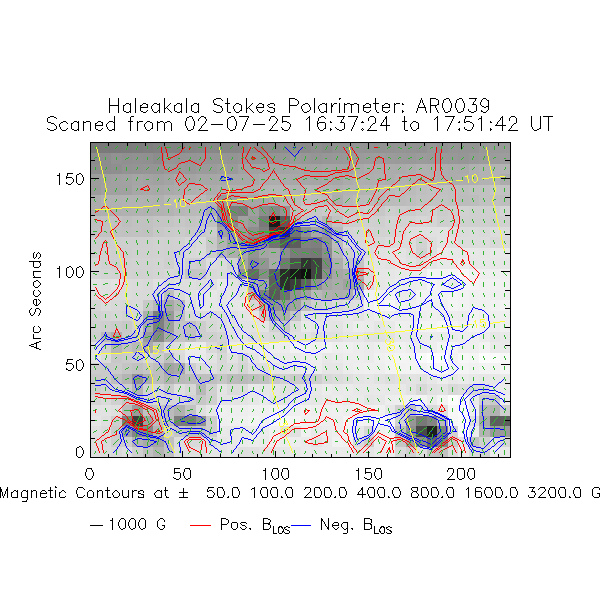Haleakala Stokes Polarimeter:
The Haleakala Stokes Polarimeter (HSP) at the Mees
Solar Observatory was the source of the
magnetograms I used. The instrument works by measuring
the four Stokes
parameters for for spectral line affected by a magnetic
field. This information can then be used
to determine the strength and direction of that magnetic
field. (see the section on the Zeeman effect)
The advantages of HSP are:
- high spectral resolving power
- simultaneous measurement of the four stokes parameters
- high polarization accuracy.
- access to a wide wavelength range
- low instrumental scattered light and coronal sight.
With limitations of:
- single spatial point
- limited spacial resolution (the detector has such a
small field of view that it must take a
measurement at one point and then shift to the
next point and take
another. This process takes an hour or so before
generating a magnetogram)
- small telescope arpeture resulting in a time resolution
of about 1 second.
- array detectors require flat field calibration
(ref: Mickey, D.L. 1985SoPh...97..223M)

An example of a magnetogram from HSP.
the grayscale is a white light image of the region. The blue
lines are contours of negative perpendicular magnetic field, the red lines
are contours of the perpendicular positive magnetic field and the green
lines vectors indicating the direction of the Line of Sight magnetic field.
More examples can be found through the Mees web page.